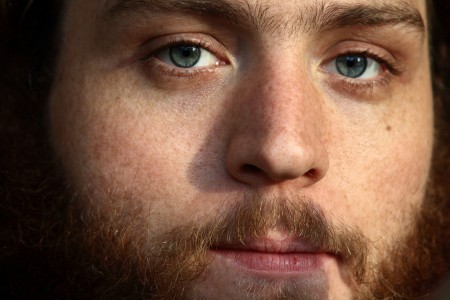The photo above is the first one I ever produced after the fact, using the RAW data from a digital sensor. Given my current suite of software (iPhoto ’08, Photoshop CS, and Canon’s Digital Photo Professional), using RAW is a bit of a pain. iPhoto imports RAW files incorrectly (producing odd black frames), at least when you have your camera set to generate both RAW and JPEG files simultaneously. The Canon EOS utility works, when it comes to getting the .CRU (Canon’s proprietary RAW format) off the camera, but it does so slowly and imports redundant copies of the JPEG files.
All that being said, there are good reasons to put up with the bother. RAW lets you adjust the white balance and exposure far more effectively after the fact than JPEG does, and ultimately represents a far superior digital negative. For now, RAW files may be an awkward annoyance even on my excellent new Mac. In a few years, the storage space and processing power to deal with them will be ubiquitous.
In short, it seems worth shooting RAW+JPEG whenever there is a decent chance you will want to use any photo in an artistic way.


In a few years, the storage space and processing power to deal with them will be ubiquitous.
This seems a safe bet. The first time I copied my music to a computer, I did it at 96 kbps. With my next computer, I did it all over again at 196 kbps. Eventually, I am sure I will want it in a lossless format.
This is much worse when it comes to data you are creating. I can go out and buy music in whatever the latest greatest format is. You only get one shot at recording your digital photos.
Another idea for putting things in perspective:
Take the RAW file size of images from your camera and work out how that much hard drive space costs. It is probably less than a frame of film costs, and you only need to keep the successful images.
Right now, I have one terabyte drives in my computer and in an external enclosure. The external one cost about $300, making the cost-per-meg 0.03 cents. Since it makes sense to have at least one backup of everything, let’s call that 0.06 cents per meg.
That means a 15 megabyte RAW file consumes 0.9 cents worth of space on both drives. 24 frames would therefore cost $0.22 worth of media.
At Henry’s, a roll of 36 frames of Fuji Velvia is going for $14.99. The cheapest roll of 24 frames they seem to sell (Fuji Superia) is $4.99. Lens and Shutter doesn’t even seem to list film prices on its website anymore.
RAW seems like a pretty good deal, even if I am just hanging on to the files for the day when I have better software.
Hi Milan,
I shoot jpg and process my pictures in Adobe Lightroom. Lightroom can do non-destructive processing of jpegs. I’ve tried shooting in RAW but I don’t see any difference in the final product, and jpegs are a LOT smaller.
Just my opinion. I strongly suggest: get Lightroom.
-Robin
Surprisingly, Lightroom isn’t actually all that expensive: just $139.99 on Amazon.com.
I was expecting it to be in the same price class as Photoshop itself.
Maybe that’s the upgrade price. I see Lightroom 2 for $273.99 at Amazon. Still not the same ballpark as Photoshop.
Lightroom integrates well with Photoshop. You can flip over for certain tasks, then save back into Lightroom.
What are the advantages over iPhoto, which I already have and already have tens of thousands of photos tagged and categorized within?
Dunno Milan, I’ve never used iPhoto. I tried googling iPhoto vs Lightroom and got quite a few hits.
I think I will stick with iPhoto.
My images are already there and tagged, I know how to use it, and I will get an updated version for free whenever I get a new Mac.
In general, I store unprocessed digital files in iPhoto for archive purposes. I then tweak individual images one at a time for the blog and other purposes. For that workflow and the number of images I work with, iPhoto seems adequate.
For now, I think I will just dump RAW images in datestamped folders. Since I rarely make prints, I am keeping them mostly as a resource for the future.
Whatever works for you :)
I only jumped in to defend jpegs, which can be edited non-destructively using Lightroom and are much smaller than RAW files.
For the most part, I agree that JPEG is great. I also see the value of having all the unmodified files in one place. I never alter the iPhoto versions of my photos. That being said, I don’t keep duplicate copies of the ones I post online either.
I definitely appreciate the suggestions.
I put up a post in the photo.net forums about my problems with iPhoto and RAW.
Film: The Real Raw
© 2009 KenRockwell.com. All rights reserved.
A raw file is not an original image. A raw file has already sampled and quantized the image, which loses information, while film retains the original image to be retrieved at any time in the future.